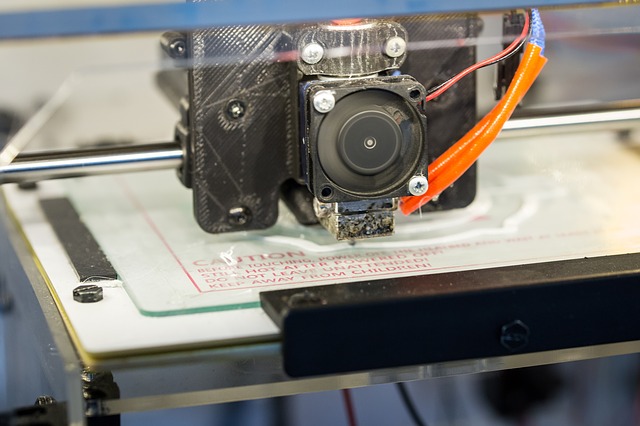[ad_1]
Both ABS and PLA are thermoplastics. Thermoplastics become malleable when superheated, thus allowing you to mould them into different shapes prior to cooling. 3D printing uses both PLA and ABS filament via similar processes, but they differ in as much as some printers will only utilise ABS or PLA.
Unlike inkjet and laser printers which use printer ink cartridges and toner cartridges to dispense a print medium. 3D Printers use thermoplastics which are dispensed from a reel through a heated nozzle to form a 3D printed object. This plastic is called filament.
ABS Filament
Acrylonitrile Butadiene Styrene, or ABS, is an oil-based plastic. Used for constructing things such as car parts, musical instruments, and Lego building blocks it is a strong, sturdy material. With a high melting point, ABS filament can warp if it is allowed to cool while printing. Therefore ABS prints should be carried out on a heated surface, which many home use printers do not have. ABS also gives off fumes when in use requiring adequate ventilation.
Examples of 3D Printers that use ABS filament are the Colido 2 0 High Resolution FDM 3D Printer and the Ultimaker 2 Go High Resolution FFF 3D Printer both printers can use ABS and PLA Filament.
PLA Filament
Made from organic material, cornstarch and sugarcane, Poly Lactic Acid, PLA, is both easier and safer to use than ABS. PLA gives a smoother and shinier appearance that’s more aesthetically pleasing on the eye, it also has a slightly sweet odour when heated opposed to the harsh smell often associated with ABS. But, whilst PLA filament might seem like a better overall choice at first glance, it has a far lower melting point than ABS. Printed parts made from PLA that are intended for use in mechanical operations, or parts that are stored in high temperatures can become warped cracked or even melt. Although weaker than ABS, PLA can achieve a superior level of print detail and is less prone to errors while printing.
Examples of 3D Printers that use PLA filament are the Colido Compact 3D Printer High Resolution FDM 3D Printer and the Da Vinci 1 1 Plus 3D Printer Wi-Fi, Standalone 3D Printer which use both ABS and PLA Filament.
To summarise
ABS filament will give your printed objects better structural integrity and will be more suited to mechanical use, but it also requires specific types of printers and printing surfaces such as a heated bed.
PLA filament gives you more precise prints with a better aesthetic quality, as well as more flexibility with printing conditions. Simply put, PLA is for hobbyist 3D printers while ABS filament is more suited to commercial grade products that need to endure more rigorous wear and tear.
[ad_2]

